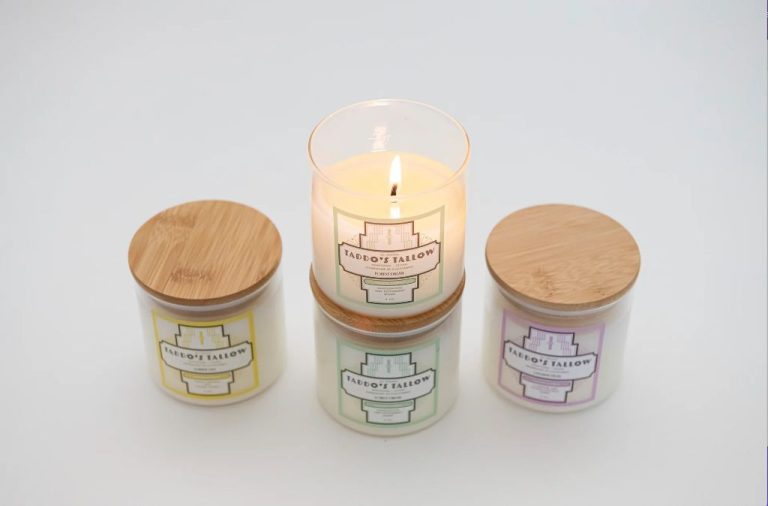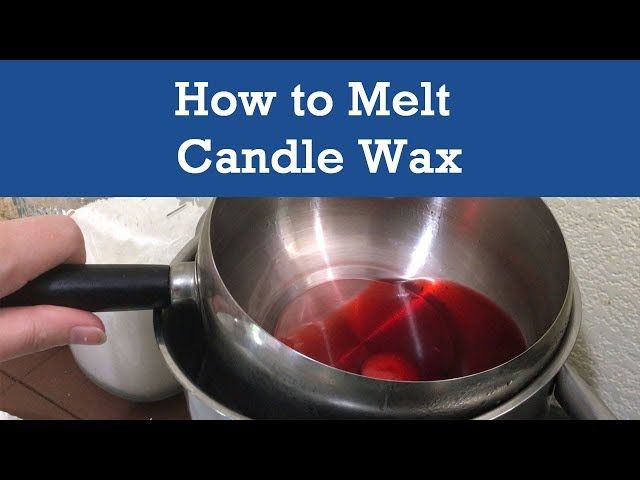Does Coconut Oil Make Candles Last Longer?
Coconut oil is increasing in popularity as an alternative to traditional candle waxes like paraffin and beeswax. This article will explore whether using coconut oil in candles can help them burn longer compared to other types of waxes. We’ll examine the properties of coconut oil that make it suitable for candlemaking, look at how it compares to paraffin, beeswax, and soy wax specifically in terms of burn time, and provide tips for making longer lasting coconut oil candles.
How Candle Wax Works
Candles work through a process called capillary action. The wick in the candle is a specially designed fiber that draws liquid wax up to the top of the wick. As the flame heats the wax at the top of the wick, it melts it into a liquid state. This liquid wax is then drawn up the wick to the flame through capillary action.
The flame vaporizes the liquid wax and breaks down the hydrocarbons into molecules of hydrogen and carbon. These very hot gases combine with oxygen in the air to produce water vapor, carbon dioxide, and light.
The wax vapors sustain the flame as long as there is liquid wax available. As the candle burns down, the melted wax pool extends down into the candle. This brings new solid wax into contact with the wick so it can melt and continue fueling the flame via capillary action. The candle will continue burning in this way until all the wax is used up.
Candle wax is specially formulated to melt at temperatures achievable by a candle wick flame. The melting point, along with the wax composition, determines characteristics like burn time. When selecting candle wax, it’s important to match the properties to the candle’s intended use and burning conditions.
Coconut Oil Properties

Coconut oil is composed primarily of saturated fatty acids, with the main fatty acid being lauric acid (C12). Lauric acid makes up nearly 50% of coconut oil https://www.healthline.com/nutrition/why-is-coconut-oil-good-for-you. Other fatty acids include myristic acid (C14), palmitic acid (C16), caprylic acid (C8), and capric acid (C10).
The high saturated fat content of coconut oil gives it unique properties compared to other oils. Coconut oil is solid at room temperature with a melting point of around 76°F (24°C). This is due to the high percentage of saturated fats which allows the fatty acids to pack together tightly https://www.medicalnewstoday.com/articles/282857. When heated, coconut oil liquefies into a clear oil that remains fluid until cooled again.
Coconut oil has a relatively high viscosity compared to other plant-based oils like olive or sunflower oil. Viscosity is a measure of an oil’s resistance to flow. The saturated fat composition gives coconut oil a thicker, more viscous texture.
Additionally, the fatty acid composition of coconut oil allows it to penetrate hair and skin efficiently. This makes it useful for beauty applications in addition to cooking.
Using Coconut Oil in Candles
Coconut oil has become a popular alternative to traditional candle waxes like paraffin and beeswax. Coconut oil has some advantages when used in candle making:
– It has a high oil content and great fragrance throw. The natural saturated fats in coconut oil help fragrances disperse efficiently as the candle burns. This allows coconut oil candles to fill a room with scent.
– Coconut oil candles burn slowly and evenly. The high oil content causes the melted wax to pool instead of immediately evaporating, leading to a longer burn time.
– Coconut oil is inexpensive and readily available. Pure coconut oil can be purchased for a reasonable price at most grocery stores.
– It’s natural and environmentally friendly. Coconut oil comes from a renewable resource and produces less soot than paraffin when burned.
https://www.deepnature.fr/dn_en/immersion-scented-candle-180g.html
However, there are some downsides to using coconut oil in candles:
– The low melting point of 76°F means candles may not stand up in warmer environments. The wax can lose its form at normal room temperature.
– Coconut oil candles do not hold dye pigments well. The candles will usually burn white regardless of colorant used.
– The natural tropical aroma of coconut oil can overpower added fragrances. It may give candles a suntan oil scent.
– Hard oils like coconut oil shrink as they cool after being poured. This can lead to concave tops, sink holes, and cracks.
Overall, coconut oil can make great natural candles when used properly. But it has some limitations compared to traditional waxes. Candle makers should experiment to find the right coconut oil blends and wicking that allows for an even, long burn.
Coconut Oil vs. Paraffin
When comparing coconut oil candles to paraffin wax candles, coconut oil tends to burn longer. Paraffin wax is a petroleum byproduct made from crude oil that typically has a shorter burn time than natural waxes like coconut oil.
One reason coconut oil candles burn longer is because coconut oil has a higher melting point than paraffin wax. The melting point of coconut oil is around 76°F while paraffin wax melts at temperatures between 115-150°F [1]. The higher melting point makes coconut oil more resistant to melting which contributes to a longer burn time.
Additionally, coconut oil is denser than paraffin wax which allows more fragrance to be absorbed. With more fragrance oil, coconut candles tend to have a stronger scent throw and fragrance than paraffin candles [2]. This allows the scent to last throughout the entire burn time of the coconut oil candle.
Overall, coconut oil candles can burn around 50-60% longer than a paraffin candle of the same size. The natural structure and density of coconut oil give it performance advantages over paraffin resulting in a longer burn time.
Coconut Oil vs. Beeswax
Coconut oil and beeswax are two popular natural candle waxes that many candle makers swear by. When it comes to burn time, there are some key differences between candles made with coconut oil versus beeswax:
Beeswax candles tend to have a longer burn time compared to coconut oil. According to Creative Candles, beeswax candles can burn 35-45 hours per ounce of wax, while coconut oil candles burn 18-25 hours per ounce[1]. The higher melting point of beeswax (144–147°F) compared to 76–78°F for coconut oil allows beeswax to burn slower and more steadily.
However, the difference is not always clear cut. Some testing has shown coconut oil candles can burn just as long or even longer than beeswax depending on the wick and other factors. The naturally oily, saturated structure of coconut oil allows for an even burn with minimal dripping or tunneling that shortens a candle’s life[2].
In general, well-made candles from either coconut oil or beeswax can provide long burn times of 30 hours or more. But if maximizing burn time is the priority, beeswax may be the best choice for an all-natural long-lasting candle.
Coconut Oil vs. Soy
When comparing coconut oil to soy wax for candle making, one of the biggest considerations is burn time. Coconut wax candles tend to have a longer burn time compared to soy candles. According to research, coconut wax candles can burn 35-40% longer than soy candles [1]. The natural properties of coconut oil allow it to melt at a lower temperature and burn slower and more evenly than soy wax.
The reason coconut wax lasts longer is because it has a higher melting point than soy wax. Coconut oil melts at 76-78°F whereas soy wax melts at 115-135°F [2]. The lower melting point allows coconut oil to liquefy into a pool of wax as it burns. This pool absorbs the entire wick which ensures an even burn. Soy wax does not melt into a perfect pool so the wick burns unevenly. The more even burn of coconut wax leads to a longer overall burn time.
Coconut wax is generally more expensive than soy wax. However, because it burns slower, less wax is needed overall. Soy wax candles need to be larger to achieve the same burn time as smaller coconut wax candles. So while the upfront cost may be more for coconut oil, it can actually be more cost effective in the end for making long burning candles.
Other Factors Affecting Burn Time
The length of time a candle burns depends on several factors besides just the wax type used. Some key factors that impact burn time include:
Wick Type – The wick is the component that delivers fuel to the flame. Thicker wicks tend to burn faster and hotter, while thinner wicks burn slower. Wicks made from natural fibers like cotton tend to be best for an even, long burn.
Vessel – Containers that are wider allow more oxygen to reach the flame, making candles burn faster. Deeper, narrower vessels restrict air flow and slow down the burn rate. Glass and metals vessels absorb less heat compared to containers like ceramic that retain heat.
Candle Size – Not surprisingly, larger candles with more wax will burn longer than smaller candles. Standard jar candles often have burn times from 45-60 hours for 14-20 oz. sizes. Pillar candles may burn around 1 hour per inch of height.
Room Temperature – Warmer environments will make candles burn faster than cooler ones. Air circulation from fans, open windows etc. also increases burn speed by supplying more oxygen.
Proper Use – Always trim wicks to 1⁄4” before lighting, and avoid drafts which can make candles burn unevenly. Let melted wax pool completely before extinguishing the flame.
Taking these factors into account when formulating, pouring and burning candles can help maximize burn time. Testing different wick types and vessel styles with the same wax can demonstrate the effects first-hand.
Making Longer Lasting Coconut Oil Candles
There are a few tips for increasing the burn time of coconut oil candles:
- Add beeswax – Mixing in 10-15% beeswax with the coconut oil can help harden the wax and improve burn time. Beeswax has a high melting point which helps anchor the softer coconut oil. (1)
- Use coconut wax rather than coconut oil – Coconut wax is hydrogenated coconut oil that has been formulated specifically for candle making. The hydrogenation process helps harden the wax. Using a coconut wax blend instead of pure coconut oil can extend burn times. (2)
- Add stearic acid – Adding 5-10% stearic acid to the coconut oil mix can help extend burn times. Stearic acid is a natural saturated fat that helps harden the wax. (1)
- Avoid high temperatures – Pouring & cooling wax at temps above 135°F can result in a softer wax that doesn’t hold its shape as well. Maintaining temps below 130°F can help maximize hardness. (1)
- Use proper wicking – Wicks that are too thin can tunnel the wax and lead to faster burning. Use wider wicks appropriate for the candle diameter to support complete melt pool burns. (2)
- Allow for full cure time – Fully cured coconut oil candles are harder and denser than those burned too soon. Letting candles cure for 1-2 weeks ensures the wax has fully hardened. (2)
Following these tips can help make coconut oil candles achieve longer burn times comparable to paraffin or beeswax.
Conclusion
Based on all of the information considered in this piece, using coconut oil in candles can extend burn times in many cases but it depends greatly on the unique properties of the specific coconut oil as well as other wax additives and candle making techniques. Pure coconut oil has a lower melting point than many other candle waxes, and it tends to burn cooler and slower as well. However, factors like fragrance oils, dicing/grating the wax, double boiling methods, and blending with beeswax or soy wax can optimize coconut oil’s burn time.
The key takeaways are:
- Coconut oil candles often burn slower and cooler than paraffin.
- Beeswax coconut blends tend to burn the longest.
- Proper preparation of the coconut oil and wick are crucial.
- Adding fragrances may speed up the melt pool but can also enhance the experience.
- There are many techniques to extend any candle’s burn time, with testing and adjustments.
In summary, with the right methods, coconut oil can certainly help make candles last longer compared to paraffin. But beeswax and soy blends may yield even better results. As with any candle making, finding the perfect formula takes trial and error.



